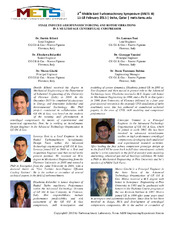| dc.description.abstract | The Oil & Gas industry is looking with increased interest
at solutions for improving operating flexibility of centrifugal
compressors. The stable operation of a compressor stage or
machine is generally limited at the left of operating range by
the occurrence of a local aerodynamic unsteady phenomenon,
the rotating stall, which usually precedes the surge. Rotating
stall could cause, depending on the actual operating conditions,
severe sub-synchronous vibrations to the rotor which may
compromise rotordynamic behavior, preventing the machine
from operating at very low flow rates. An accurate
characterization of rotating stall phenomena, and their impact
on rotordynamic stability, may represent an important step
forward in centrifugal compressor design and performance
predictability, insofar as it allows to correctly predict the real
operating range of the machine.
In recently published works the authors presented a
procedure which allows reconstructing the pressure unbalance
due to the diffuser rotating stall, to estimate the rotating force
acting on the shaft and, by means of a rotordynamic model, the
vibration at the bearings. In addition to this, a criterion to scale
the rotating force coming from model test conditions up to fullscale
machine conditions has been developed and successfully
validated.
In this framework a thorough work has been performed to
apply the aforementioned procedure to an LNG multistage
compressor.
Firstly, the stages which equip the machine were tested as
single scaled-down stages in a model test rig, in order to fully
characterize their dynamic behavior while approaching the left
limit and operating in stall condition. Then, the full scale
machine has been equipped with dynamic pressure probes in
different locations along the gas flow path, and has been tested
according to ASME PTC-10 standard; this allowed to capture
the stall inception and its evolution and finally to get the
rotating pressure pattern acting on the rotor. A noticeable
agreement was obtained between the force resulting from the
pressure field integration and the one obtained through a proper
scaling of the test data.
Finally, the calculated stall force has been used as an input
in a rotordynamic model of the whole compressor: the
predicted Subsynchronous Vibration (SSV) estimated at the
displacement probe location has been compared with the
measured value showing some differences which can be related
to the proximity of the first rotor mode. | en |


